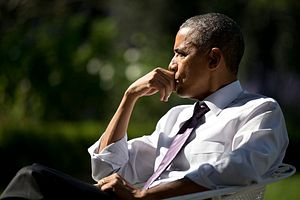As The Diplomat’s Franz-Stefan Gady pointed out earlier this week, there’s little hope at the U.S. Department of Defense that its $585 billion budget request for 2016 will make it through Congress.
At first glance, the price tag is a non-starter. The Defense Department’s wish list tops out at $585 billion, well above the agency’s $499 billion spending cap mandated by the 2011 Budget Control Act. If the House and Senate passed the proposal as it’s currently structured, it would trigger automatic cuts, pushing spending back down to the legal limit. Former Pentagon official Ashton Carter, nominated to replace Chuck Hagel as Secretary of Defense, has said that U.S. strategy is “not executable” with those limitations in place.
Even if the current request goes nowhere, which many expect to happen, it’s an important affirmation of President Barack Obama’s pivot to Asia. “In pursuit of security cooperation, the Budget enhances and modernizes U.S. defense relationships, posture, and capabilities with a focus on maritime security,” the document states with reference to the region.
That modernization will take many forms. Administration officials have been careful to frame Asia as a long-term priority, contrasting the shift with near-term challenges in Ukraine, Syria, and Iraq. The Defense Department will have new tools to tackle that shift: the budget allocates $10.6 billion to purchase 57 F-35 joint strike fighters and an additional $1.2 billion to build a new strategic bomber.
Crisis management will also be a key focus: the Army will conduct three Pacific Pathways deployments to the Asia-Pacific in 2015, making a brigade available to respond to humanitarian disasters or regional threats. America’s maritime presence in the region will increase by 8 percent over the next year, according to DoD estimates, and by 2020, the navy hopes to forward deploy 115 ships, many to Pacific bases at Apra Harbor, Guam and Okinawa, Japan. The Air Force budget also provides funding for smart munitions kits and air-to-surface standoff missiles, deterrents to China’s anti-access and area denial capabilities.
Those commitments could grow. Washington has long been considering a plan to install a thermal high-altitude area defense (THAAD) system in South Korea, designed to shoot down high-flying ballistic missiles, much to the chagrin of Beijing. During his trip to India last month, President Obama finalized a defense framework with Prime Minister Narendra Modi that will upgrade Delhi’s hand-launched drones, improve surveillance technology for military transport aircraft, and create a joint working group to explore sharing aircraft carrier technology.
President Obama’s budget proposal puts more muscle into the United States’ Asia policy. But the document likely won’t survive its trip through the legislature. As a result, the administration will have to calibrate its long-term hopes into short-term realities. With tumult increasing in Eastern Ukraine and the Middle-East, Asia’s place in the United States’ ongoing defense debate may not be secure.

































